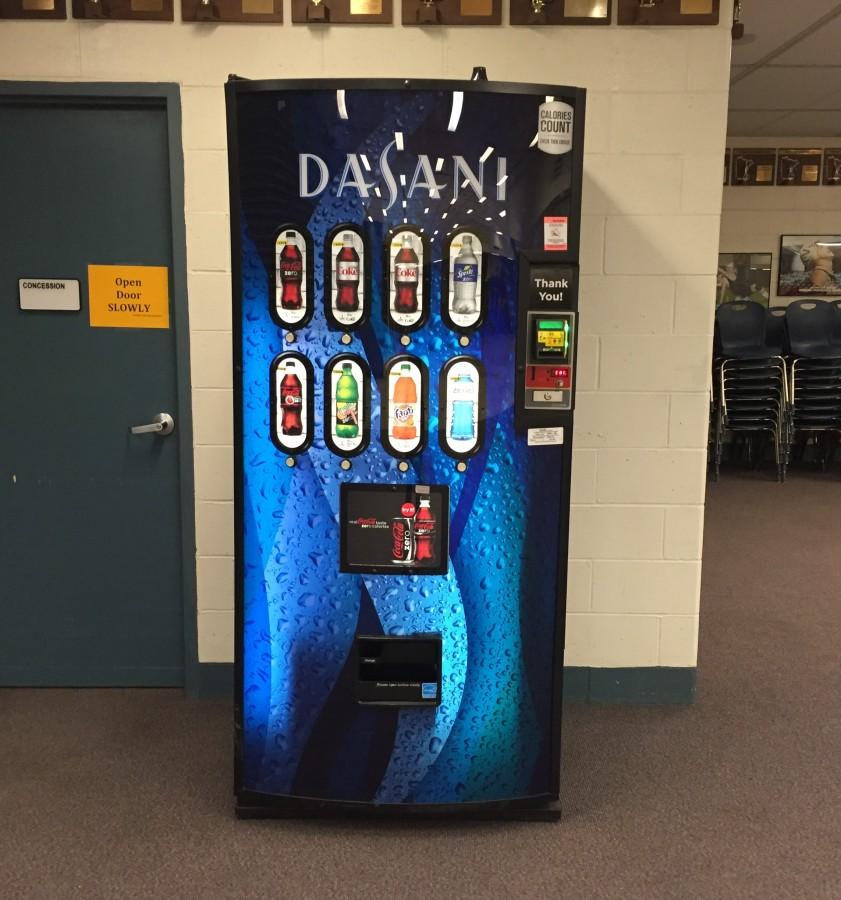To Drink Or Not To Drink: Do We Make Healthy Lunch Drink Options?
January 12, 2016
Do you want Type 2 diabetes, heart disease, or obesity? If you answered “yes” to any of those options, drink sugary beverages.
Although the previous statement is harsh, it’s alarmingly true. And it’s not like we haven’t received any warning. A recent statement released by the USDA states that we should drink water instead of sugary drinks. Yet we Americans continue to ignore the signs.
If you passed Wellness 1, you know that the maximum amount of added sugar an average high school student should be consuming daily is 20 to 32 grams. A 12-oz can of Coke has a total of 39 grams of sugar. That’s seven more grams than the maximum amount of sugar suggested for daily consumption!
After surveying 100 students in third lunch, I found that 43 out of the 100 were drinking pop. So the real problem now comes into light: are we making the right decision when it comes to beverage options?
When it comes to pop consumption, senior Jon Carria said he drinks eight sugary drinks daily just for the taste. After getting a view of how strongly pop lovers feel about their beverages, another question arose: how do they feel about the zero-calorie switch that happened in the vending machines?
Freshman Zabrianna Evans said, “It’s kind of crusty. It’s crusty because I can go to the [Community Center] and get normal drinks. Why does my school have zero-calorie drinks? They need to add juice.” Hmm, I’m starting to get why it’s called zero-calorie: because it gets zero love.
Now I’m not trying to go all Michelle Obama on you, but the woman does have a point. Over the past three decades, childhood obesity rates in America have tripled, and today nearly one in every three kids is obese or overweight. Stuff like that doesn’t happen overnight; there has to be a significant factor contributing to the weight gain. And I believe that factor is sugary drinks.
Over the years, portion sizes have increased up to five times larger than they were in the past. This includes beverage portions. In the mid 1970s, the average sugar-sweetened beverage was 13.6 ounces. Today, kids don’t hesitate to guzzle 20 ounces of sugary drinks in one sitting. We are consuming 14% more sugars and sweeteners than we were in the 1970s.
Okay I get it, we all slip up…or in this case, sip up. No matter what anyone tells you, it’s virtually impossible to avoid sugary drinks. I’m not saying don’t drink them EVER, but drink it in moderation. Understand that drinks like Coke or Fanta are meant to be consumed every once in a while, not with every meal of your day.
Just because there is a problem, doesn’t mean there isn’t a solution. As we all know, the First Lady is pushing for more healthy and active lives for children all across America, and it’s working. I don’t know if you’ve noticed or not, but recently all the pop in the vending machines at AVHS have been replaced with zero-calorie drinks.
According to Mr. Bolsoni, “There is a federal movement in the United States to improve the number of healthy choices students have and decrease the number of unhealthy choices. Some of the factors they examined were calorie and sugar consumption of students during the school day. One way to lower sugar consumption and calories is to reduce high sugar drinks during the school day.” So lo and behold, we now have zero-calorie drinks.
Sure, having zero-calorie drinks is good and all, but at the end of the day it’s still pop. It’s great that it’s sugar-free, but that doesn’t make it any more nutritious. Although it isn’t solving our pop problem, it is making it better.
I can’t force you to drink more water or tell you what you can and can’t drink, but remember that this is the body you have for the rest of your life, so do you really want to drink that can of pop? The choices you make affect your daily life, sometimes something as simple as drinking pop can have a lifelong impact. As Michelle Obama once said “We need to create a culture where our kids ask for healthy options instead of resisting them.”




Smithk877 • Nov 3, 2016 at 1:48 pm
Definitely pent topic matter, appreciate it for selective information. abdaddgdgfaceekf
Smithg485 • Nov 2, 2016 at 11:29 am
I like what you guys tend to be up too. Such clever work and coverage! Keep up the very good works guys I’ve incorporated you guys to my personal blogroll. ekeekedceabbkage
Jordan Knobel-Piehl • Jan 13, 2016 at 7:33 am
One thing you forgot to point out:
For people who DON’T have diabetes, the artificial sugars in diet and zero-calorie sodas are actually LESS healthy than regular soda (source: http://www.mensfitness.com/nutrition/what-to-drink/is-diet-soda-really-the-healthier-soft-drink)
Halima Badri • Jan 13, 2016 at 7:09 pm
You’re right, I didn’t really touch on that. Thanks for the comment!